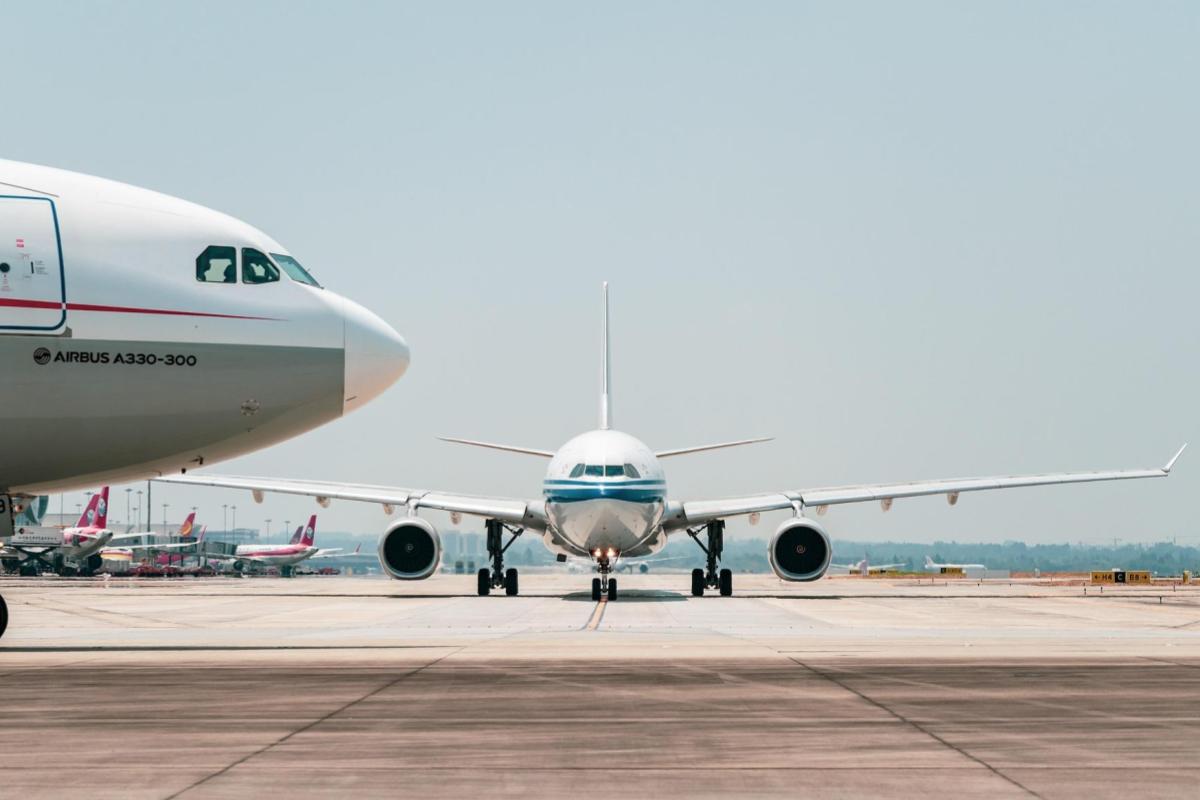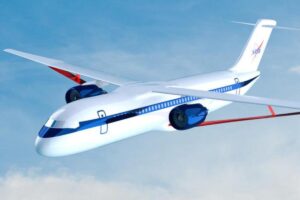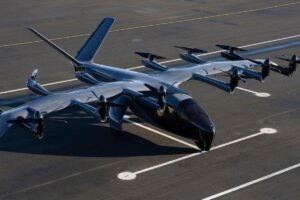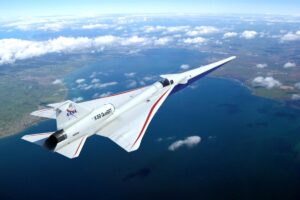Simplify Avionics Systems with Protocol Converters
Introduction
Modern avionics systems must integrate a wide range of electronic components, often developed in different eras and based on different communication standards. This integration is crucial for mission-critical operations in both commercial and military aircraft. Yet, system interoperability remains one of the most complex engineering challenges in aerospace. The solution? Protocol converters. These devices serve as the linchpin of compatibility, enabling seamless communication across heterogeneous systems.
Protocol converters are specialized tools that translate data from one communication protocol into another, without loss of fidelity or timing. In avionics, where safety, precision, and reliability are non-negotiable, these converters play a crucial role in ensuring different systems—whether legacy or cutting-edge—can function cohesively. This paper explores how protocol converters simplify avionics systems, reduce integration costs, and ensure mission readiness.
Chapter 1: The Complexity of Avionics Communication
1.1 Evolution of Avionics Protocols
Avionics systems have undergone a significant transformation over the past few decades. The journey has moved from analog systems and electromechanical interfaces to complex digital networks using advanced protocols like:
-
MIL-STD-1553 (introduced in the 1970s)
-
ARINC-429 and ARINC-664 (used in commercial aviation)
-
RS-232/422/485 (serial communications)
-
Ethernet-based solutions (Gigabit Ethernet, AFDX)
-
CAN and ARINC-825 (especially for smaller aircraft and helicopters)
This evolution has not followed a linear path. Many aircraft operate a combination of new and legacy systems, creating challenges in communication compatibility.
1.2 Data Integrity and Safety
In aerospace, data integrity isn’t just important—it’s vital. Communication errors due to incompatible protocols can lead to system failures or inaccurate information being relayed to pilots or automated controls. This is why avionics standards demand redundancy, fault tolerance, and precise timing—all of which make interoperability through protocol conversion a necessity.
Chapter 2: What Are Protocol Converters?
2.1 Definition and Function
A protocol converter is an electronic device that receives data in one protocol format and translates it into another while maintaining the logic, timing, and error-checking mechanisms expected by the receiving system. This translation ensures the systems remain “transparent” to each other.
2.2 Common Conversions in Avionics
Some of the most frequently needed conversions in avionics include:
-
RS-232/422 to ARINC-429
-
MIL-STD-1553 to Ethernet
-
ARINC-429 to Synchro
-
CANbus to ARINC-825
-
Discrete I/O to digital bus protocols
Each of these conversions solves a critical integration challenge, whether it’s enabling a modern flight management system to interface with an older instrument or connecting a ground control unit to a legacy onboard computer.
Chapter 3: How Protocol Converters Simplify Avionics Systems
3.1 System Integration without Overhaul
The main advantage of protocol converters is the ability to integrate systems without complete redesign. Aircraft that have been in service for decades can be retrofitted with newer subsystems using converters, thus extending the life of platforms while reducing costs.
3.2 Reducing Engineering Time and Cost
Developing a custom interface or entirely new software to bridge two systems is time-consuming and expensive. Off-the-shelf protocol converters provide plug-and-play solutions that dramatically reduce development cycles.
3.3 Interoperability Between Military and Commercial Platforms
Military aircraft often use protocols like MIL-STD-1553, while commercial aircraft rely more on ARINC-429 or Ethernet. When equipment from one sector is integrated into another (e.g., military-grade GPS into a commercial UAV), converters are critical to ensuring compatibility.
Chapter 4: Applications of Protocol Converters in Avionics
4.1 Flight Control Systems
Flight control systems must process data from various sensors, actuators, and computing units. Often, these components use different protocols. For instance, older actuators might use ARINC-429, while newer control computers use Ethernet. A protocol converter enables seamless translation of commands and feedback loops.
4.2 Mission Systems Integration
In defense aviation, mission systems include radar, targeting pods, and communication units. These components are frequently updated as technology advances. Rather than redesigning the entire avionics architecture, protocol converters allow for modular upgrades.
4.3 Cabin Management and In-Flight Entertainment (IFE)
Commercial airlines use multiple systems to control lighting, seat functions, video displays, and environmental controls. Converters allow these systems to interface with centralized controllers over Ethernet or CANbus, even if the end devices use older serial protocols.
4.4 Test and Simulation Systems
In labs and simulators, engineers must emulate aircraft systems for testing purposes. Protocol converters enable these simulations by translating between software-based test tools and real avionics hardware.
Chapter 5: Design Considerations for Avionics Protocol Converters
5.1 Environmental Standards
Converters must meet strict environmental requirements. They often need to be ruggedized to survive shock, vibration, and temperature extremes as defined by standards like:
-
MIL-STD-810 for environmental durability
-
DO-160 for airborne equipment qualification
5.2 Electromagnetic Compatibility
In high-density avionics environments, electromagnetic interference (EMI) can affect system performance. Protocol converters must comply with standards like MIL-STD-461 to minimize susceptibility and emissions.
5.3 Deterministic Latency
Timely data delivery is essential, especially for flight-critical systems. The converter must introduce minimal and predictable latency to maintain system performance and synchronization.
5.4 Power Constraints
Especially in UAVs and space applications, converters must be efficient in terms of power consumption and support MIL-STD-704 compliance for power input behavior.
Chapter 6: Hardware vs. Software Converters
6.1 Hardware Converters
These are physical devices with embedded logic to translate protocols in real time. They are more reliable for aviation use, particularly where timing and determinism are essential.
6.2 Software Converters
Software solutions can run on mission computers or test systems. While more flexible and easier to update, they are less deterministic and not always suitable for mission-critical operations.
6.3 Hybrid Solutions
Some systems combine hardware-based timing with software configuration to balance real-time performance with versatility. These are increasingly found in modular open systems architectures (MOSA).
Chapter 7: Regulatory and Certification Aspects
7.1 FAA and EASA Approval
Any system modification using protocol converters must go through airworthiness certification. This includes demonstrating that the converter does not introduce failure modes or violate data integrity requirements.
7.2 DO-254 and DO-178
Hardware converters often require DO-254 compliance, while software-based solutions must adhere to DO-178C development processes. These standards ensure design assurance in airborne electronic hardware and software.
7.3 Traceability and Documentation
Traceability of data paths, timing diagrams, and validation test reports are essential for certification. Leading converter manufacturers provide comprehensive support documentation to aid this process.
Chapter 8: Case Studies
8.1 Retrofitting C-130 Hercules with Modern Navigation
The C-130 used MIL-STD-1553 for most of its subsystems. A retrofit program introduced a modern GPS/INS navigation system with Ethernet outputs. A MIL-STD-1553 to Ethernet converter enabled this integration with minimal changes to existing wiring or mission software.
8.2 Integrating ARINC-429 Autopilot in UAV
A tactical UAV originally designed with CANbus-based control systems was upgraded with an ARINC-429 autopilot system. An ARINC-429 to CANbus converter allowed for direct communication between the two systems without the need to reprogram onboard controllers.
8.3 Simulation Lab for Commercial Jet Avionics
A simulation lab for a major airline manufacturer used software test systems to emulate flight systems. To test real ARINC-429 equipment, they used USB-to-ARINC-429 protocol converters that bridged lab PCs and actual flight hardware.
Chapter 9: Future of Protocol Converters in Avionics
9.1 Trends Toward Ethernet and IP-Based Systems
The future of avionics is Ethernet-based. However, legacy systems are not going away anytime soon. Protocol converters will continue to play a critical role as aircraft transition incrementally to newer communication architectures.
9.2 Artificial Intelligence and Smart Converters
Smart protocol converters can now analyze, route, and prioritize data using AI-driven logic. This enables more adaptive systems that optimize bandwidth, prioritize safety-critical messages, and even predict faults before they occur.
9.3 Cybersecurity Concerns
As converters bridge networks, they can also become a point of vulnerability. Manufacturers are embedding cybersecurity features like data encryption, access controls, and anomaly detection into next-gen converters.
Chapter 10: Choosing the Right Protocol Converter
10.1 Define Communication Requirements
Begin with a clear understanding of what protocols are involved, what data rates are required, and how the systems must interact. Consider:
-
Protocol types (e.g., RS-422 to ARINC-429)
-
Message size and frequency
-
Timing constraints
10.2 Evaluate Certification Needs
Determine whether the converter needs to meet flight certification standards or if it’s for ground/test use only. This impacts the level of documentation, ruggedization, and testing required.
10.3 Support and Scalability
Ensure the vendor provides support for configuration, testing, and documentation. Consider future needs—will the converter be usable as systems evolve?
Conclusion
Protocol converters are the unsung heroes of modern avionics. They enable integration between systems built decades apart, reduce development time and cost, and ensure compliance with the rigorous demands of aviation standards. From enabling mission system upgrades in military jets to simplifying cabin system architecture in commercial airliners, these devices make advanced avionics possible without requiring complete redesigns.
As the aerospace sector moves toward more interconnected, data-driven, and software-defined systems, protocol converters will continue to evolve, incorporating AI, cybersecurity, and edge processing. Their role is only set to grow, ensuring that aircraft systems—regardless of origin or age—can speak the same language in the sky.
